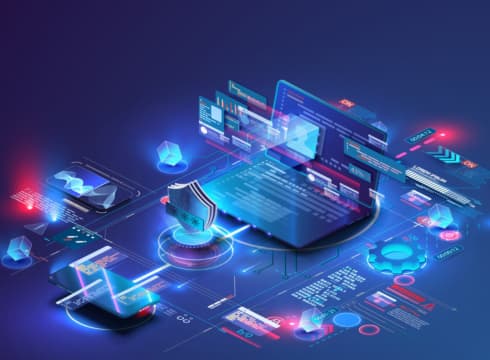The rise of cloud technology in recent years has made it possible to bring whole business operations off-site with the use of SaaS or Software-as-a-Service
With Gartner forecasting a 16.8% growth for SaaS in 2023, the use of SaaS products shows no sign of slowing down
The popularity of SaaS has significantly gone up in response to the hyper-specialisation of business and the demands of the contemporary work environment
Inc42 Daily Brief
Stay Ahead With Daily News & Analysis on India’s Tech & Startup Economy
Traditionally, companies had to invest in on-premise infrastructure to avail the benefits of software like business analytics, CRM and automation. However, the rise of cloud technology in recent years has made it possible to bring whole business operations off-site with the use of SaaS or Software-as-a-Service.
Companies can now leverage a wide range of applications that allows them to grow swiftly without incurring high overheads. The popularity of SaaS has significantly gone up in response to the hyper-specialisation of business and the demands of the contemporary work environment.
Location changes and remote working has changed how employees communicate with customers and colleagues, giving rise to a plethora of new collaboration and platform tools, all of which are controlled by SaaS products.
The use of SaaS products shows no sign of slowing down. Gartner forecasts 16.8% growth for SaaS in 2023. Further predictions suggest that the global SaaS industry will be worth $60.36 Bn by 2023.
Moreover, about 85% of corporate apps will be based on SaaS by 2025. The direction of these predictions would be impacted directly by the emerging SaaS trends and the market development of SaaS.
SaaS For Vertical Industries
SaaS is becoming more industry-vertical specific owing to the continuous specialisation. Today companies can adopt SaaS solutions uniquely designed for their requirements and concerns.
For example, electronic health records in the domain of healthcare. Even though many vertical SaaS have existed for years, this trend will likely experience a significant boost in recent years and account for a considerable portion of the overall SaaS spending.
Micro SaaS app is a vertical SaaS app developed to cater to even more specific needs than a particular industry. For example, you can have a vertical SaaS app for the education sector and a specific micro app for kindergarten, another for middle-school education, and so on.
Modern users expect SaaS products to address their particular needs and pain points, giving rise to new opportunities for developers to build software that can meet these demands.
Decoupling And Unbundling
SaaS is commonly delivered in bundled form, which implies pairing distinctive capabilities into discrete packages. These packages are generally characterised by providing users with more features in higher tiers (and greater pricing).
In recent years, however, many SaaS providers have adapted to packaging and pricing models for customers to be more selective regarding their desired features and find the most valuable. Such an approach allows the providers to unbundle packages. This trend will likely continue as vendor lock-in is considered a significant challenge for SaaS adoption.
The popularity of SaaS is constantly growing, with over 88% of businesses using at least a single cloud computing service. While the pandemic negatively impacted many industries, it provided an excellent boost to the SaaS trends.
According to Gartner, there are four critical trends for 2023.
Metaverse
SaaS will likely integrate with an even more expansive digital space in 2023, such as the metaverse. Currently, the metaverse is in its infancy stage, but if its features are effectively explored, its connection with SaaS becomes clearer.
The metaverse requires purpose-built, flexible networks with minimal latency to create truly immersive experiences. Mature SaaS systems are designed to streamline networks and workflows, positively impact outcomes and speed up operations. All of these factors are integral to metaverse experiences, particularly for the ones operating in business spaces.
Hence, SaaS will likely be reoriented to work in the metaverse shortly. It can accelerate the metaverse and help bring digital realities from instantaneous non-virtual experiences and environments.
Applied Observability
Developing a successful SaaS involves good observability throughout the user journey across the various interface and touchpoints. Observable data reflects the digitised artefacts appearing when a stakeholder takes any action.
Applied observability feeds these observable artefacts back in an integrated and orchestrated approach to accelerate organisational decision-making. Applied observability can emerge as the most potent source of data-driven decision-making when strategically planned and executed, and its prominence will likely increase in the future.
Emergence Of Super Apps
Many successful super apps have come up across diverse markets, from Gojek in Indonesia to Tata Neu in India. The increasing number of smartphone users worldwide and rapidly growing internet penetration shall continue to create a massive user base for the super apps in 2023.
Cross Industry Clouds
Multi-cloud or SaaS must seamlessly work across industry clouds like Azure, AWS, GCP etc., for the ease of the users and to ensure incremental savings on cloud infrastructure costs.
The last three trends mentioned above have already taken place and will only gain momentum. Meta is gradually positioning itself as an all-encompassing medium through which every SaaS, B2B, and B2C transaction happens. Still, we must wait and see how this trend evolves.
{{#name}}{{name}}{{/name}}{{^name}}-{{/name}}
{{#description}}{{description}}...{{/description}}{{^description}}-{{/description}}
Note: We at Inc42 take our ethics very seriously. More information about it can be found here.


